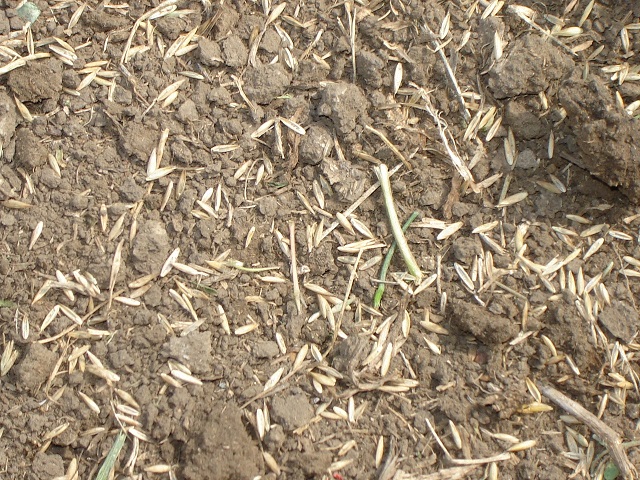Dormant Seeding
A thick lawn of green grass is the goal for many homeowners. But the ever-changing weather in our area makes this goal difficult to achieve. The best time to repair a bluegrass or tall fescue lawn is a narrow window of four to six weeks, from September through early October.
Some homeowners are unable to make needed repairs in the yard during these few weeks. I am frequently asked if bluegrass and tall fescue can be planted another time of year. The answer, like many answers, is complicated. Dormant seeding, to seed when plants are dormant, is an option to consider.
While dormant seeding may fill in small, bare areas, it is not ideal for overseeding large areas. Dormant seeding requires more thought and work than merely casting seeds and hoping for the best.
The key to establishing grass seed is to make sure the seed is in contact with the soil. Prepare larger areas for dormant seeding by using a verticutter to break up the soil. Small areas can be roughed up with a rake.
Seeds will work their way into the soil by the natural freeze-thaw cycles, creating cracks in which the seed can move. This movement is enhanced when there has been rainfall or a light covering of snow as the moisture helps expand the soil.
Increase the seed-to-soil contact with a light covering of soil. This helps prevent the seed from washing away or from hungry birds.
Cool-season grass starts to germinate when soil temperatures reach the upper fifties. Don’t expect any signs of growth until late winter or early spring. Dormant seeding does have an advantage over spring seeding as the seeds germinate sooner than waiting for consistently warm weather.
Dormant seeding can be done anytime from December through March. Several years ago, K-State Extension conducted a study where they dormant seeded an area every month from December through March. In mid-May, the plots were evaluated for percent of coverage. The plots seeded in February and March had about 80% coverage compared to 60% for plots seeded in December and January.
The main disadvantage of dormant seeding is the young seedlings have little time to establish before the summer heat arrives. Seedlings have limited roots and are more susceptible to stress. Timely watering helps, but under stressful conditions, it may not be enough.
Spring weeds can also be a problem. Crabgrass prevention is challenging as these products are recommended for established lawns. Broadleaf controls are limited.
In my experience, the dormant seeded grass dies out over the summer resulting in the need to seed again in the fall. Dormant seeding may help reduce some of the bare or muddy soil conditions over summer until seeding can be done at the recommended time.
If everything falls into place, good soil moisture and fluctuating temperatures help to break and loosen the soil crust, then dormant seeding can be more successful. This just might be a good time to try dormant seeding. Who knows-come spring, your carpet of green may have returned.
Other Resources
Do You Have Questions?
Have questions? The Garden Hotline is staffed by trained EMG volunteers and Extension staff who will assist you with questions.
Phone: (913) 715-7050
Email: garden.help@jocogov.org

Other Resources
Have questions? The Garden Hotline is staffed by trained EMG volunteers and Extension staff who will assist you with questions.
Phone: (913) 715-7050
Email: garden.help@jocogov.org